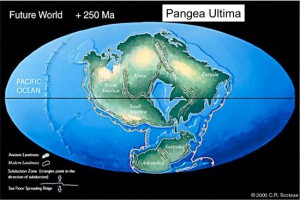What’s This? No. 14
 At long last my What’s This? challenge returns with a highlight of my summer road trip. This is among the most remarkable of its kind ever discovered. The first to name it wins fame and $5 off any of my outings or workshops. Enter in the comments section below. Hint: Follow the Yellow Brick Road.
At long last my What’s This? challenge returns with a highlight of my summer road trip. This is among the most remarkable of its kind ever discovered. The first to name it wins fame and $5 off any of my outings or workshops. Enter in the comments section below. Hint: Follow the Yellow Brick Road.
Added August 13: We have a winner! Alice Porembski was first to recognize this as a fossil dragonfly wing. More specifically, it’s Megatypus schucherti, one of the largest insects ever to have lived. About 280 million years ago it owned the skies. And a few days ago it owned me.
I visited with Megatypus in the Insect Zoo at Kansas State University (Go Wildcats!) in Manhattan, KS (as I recall, there’s a less-consequential Manhattan somewhere else) and with Roy Beckemeyer, who knows more about this and other Permian insect fossils from the region than anyone. Megatypus was a highlight of my summer road trip, spent in part chasing living dragonflies and working on my book.
 The Permian (252-299 million years ago) marked a leap for life on land and in the air. The dominant land mass at the time was a supercontinent known as Pangea. (The continental plates as we know them today – and roughly outlined to the right there on Christopher Scotese’s great Paleomap Project image – hadn’t yet drifted apart.) What’s now Kansas (and much of the US) was closer to the equator. Dominating the land, eating its plants and eating each other, were what amounts to giant, ornery reptiles and amphibians. It might have looked a bit like this. Dinosaurs wouldn’t really rise until the Triassic began in another 50 million years, and our ancestral hominids didn’t walk upright for another 243 million years – give or take.
The Permian (252-299 million years ago) marked a leap for life on land and in the air. The dominant land mass at the time was a supercontinent known as Pangea. (The continental plates as we know them today – and roughly outlined to the right there on Christopher Scotese’s great Paleomap Project image – hadn’t yet drifted apart.) What’s now Kansas (and much of the US) was closer to the equator. Dominating the land, eating its plants and eating each other, were what amounts to giant, ornery reptiles and amphibians. It might have looked a bit like this. Dinosaurs wouldn’t really rise until the Triassic began in another 50 million years, and our ancestral hominids didn’t walk upright for another 243 million years – give or take.
Above it all were airborne insects. They invented flight, after all. Archaeopteryx and other early birds wouldn’t come along for another 130 million years. So with essentially no predators, along with higher oxygen levels to fuel their flight (or so the hypothesis goes), insects got big. Really big. One, a proto-dragonfly, the largest insect ever known, also discovered in Kansas, had a wingspan of about two and a half feet. (Oh, how wistful I am for the Permian.) Another, still huge, was a killer with an eight-inch wingspan. That’s Megatypus.
One day 280 million years ago, at an inland shoreline on Pangea, one Megatypus dropped dead. Silt eventually covered its body, which became a mess and decayed. But its flattened wings, left fairly intact, later fossilized and remained buried in layers of sedimentary rock that would go on to become a narrow corridor running north-south through Kansas and Oklahoma. The Wellington Formation, as it’s now known, would go on to become among the most significant fossil insect deposits in North America, attracting preeminent entomologists and paleontologists of the last century.
Most of the Wellington Formation’s insect fossil record comes from wing fragments. So Megatypus, two complete wings, was a prize. (The other wing is in Harvard’s Museum of Comparative Zoology.) As dominant as they were, however, most of these insects didn’t survive the Permian-Triassic Extinction, the Great Dying, when most of the planet’s terrestrial and aquatic life vanished for good. Megatypus and its relatives blinked out. But another lineage, which rose during the Triassic (252–201 million years ago) along with dinosaurs, would go on to become our modern dragonflies and damselflies.
What’s remarkable about all these fossil proto-dragonflies is how similar their wings look to their contemporary descendants. Essentially, over the course of their evolution, dragonflies got it right about 300 million years ago – and haven’t changed much since.
Why tamper with success?


Really? A fossilized dragon fly wing? Did you find it? Treasure!
Not in Kansas any more… perhaps a dragonfly wing imprint in a sedimentary stone…
fossil dragonfly wing?